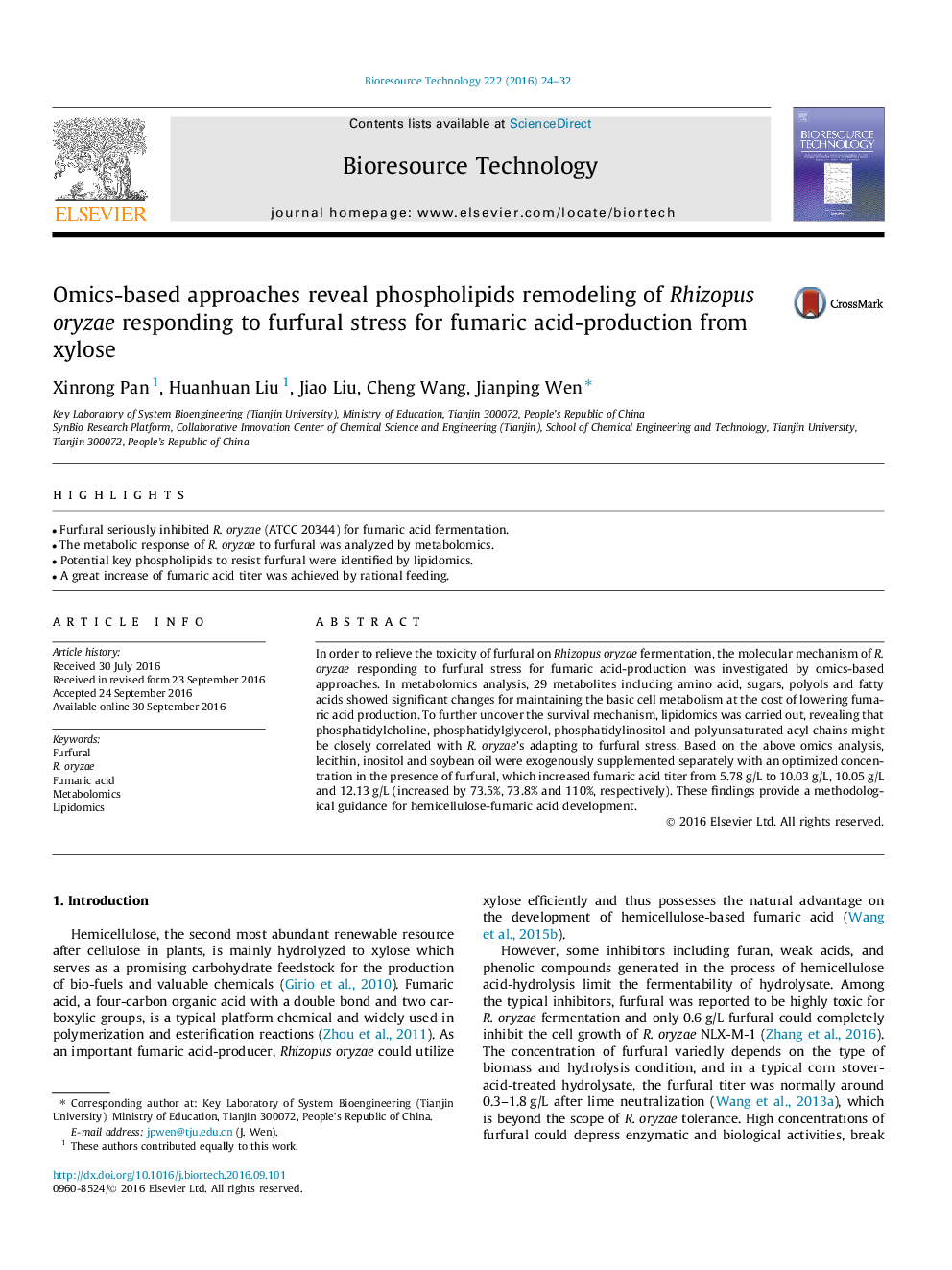| Article ID | Journal | Published Year | Pages | File Type |
|---|---|---|---|---|
| 4998011 | Bioresource Technology | 2016 | 9 Pages |
â¢Furfural seriously inhibited R. oryzae (ATCC 20344) for fumaric acid fermentation.â¢The metabolic response of R. oryzae to furfural was analyzed by metabolomics.â¢Potential key phospholipids to resist furfural were identified by lipidomics.â¢A great increase of fumaric acid titer was achieved by rational feeding.
In order to relieve the toxicity of furfural on Rhizopus oryzae fermentation, the molecular mechanism of R. oryzae responding to furfural stress for fumaric acid-production was investigated by omics-based approaches. In metabolomics analysis, 29 metabolites including amino acid, sugars, polyols and fatty acids showed significant changes for maintaining the basic cell metabolism at the cost of lowering fumaric acid production. To further uncover the survival mechanism, lipidomics was carried out, revealing that phosphatidylcholine, phosphatidylglycerol, phosphatidylinositol and polyunsaturated acyl chains might be closely correlated with R. oryzae's adapting to furfural stress. Based on the above omics analysis, lecithin, inositol and soybean oil were exogenously supplemented separately with an optimized concentration in the presence of furfural, which increased fumaric acid titer from 5.78Â g/L to 10.03Â g/L, 10.05Â g/L and 12.13Â g/L (increased by 73.5%, 73.8% and 110%, respectively). These findings provide a methodological guidance for hemicellulose-fumaric acid development.
